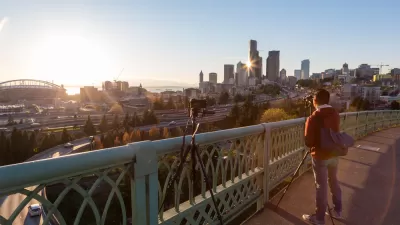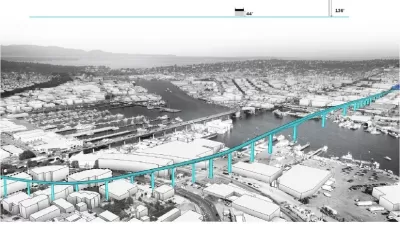A more than 400 percent increase in bike ridership following the opening of a protected bike lane on Second Avenue proves that Seattleites are more inclined to ride with safe facilities.

Part of an ongoing project to improve bikeability in Seattle, WA, a "project began with a pilot in 2014 to convert a regular painted bike lane on Second Avenue into a curb-and-landscape-protected bike lane," reports Angie Schmitt. The now protected lane extends through hilly downtown Seattle and features a physical barrier in the form of planter boxes and barricades separating bikes and cars.
The increased ridership is a great success for proponents of bike safety in Seattle. During her tenure to date, Mayor Jenny Durkan has cut plans for many similar projects including, "a bike lane on 35th Avenue NE, a dangerous thoroughfare which has been proposed for bike lanes for a decade." While the Second Avenue Bike Lane cost about $12 million (the most expensive bike lane in Seattle history) and required significant utility movement, hope remains that proof of the "game-changing power of a protected lane versus a painted lane" won’t end with this project.
FULL STORY: Ridership Jumped 400% When Seattle Protected a Bike Lane

Alabama: Trump Terminates Settlements for Black Communities Harmed By Raw Sewage
Trump deemed the landmark civil rights agreement “illegal DEI and environmental justice policy.”

Study: Maui’s Plan to Convert Vacation Rentals to Long-Term Housing Could Cause Nearly $1 Billion Economic Loss
The plan would reduce visitor accommodation by 25% resulting in 1,900 jobs lost.

Why Should We Subsidize Public Transportation?
Many public transit agencies face financial stress due to rising costs, declining fare revenue, and declining subsidies. Transit advocates must provide a strong business case for increasing public transit funding.

Wind Energy on the Rise Despite Federal Policy Reversal
The Trump administration is revoking federal support for renewable energy, but demand for new projects continues unabated.

Passengers Flock to Caltrain After Electrification
The new electric trains are running faster and more reliably, leading to strong ridership growth on the Bay Area rail system.

Texas Churches Rally Behind ‘Yes in God’s Back Yard’ Legislation
Religious leaders want the state to reduce zoning regulations to streamline leasing church-owned land to housing developers.
Urban Design for Planners 1: Software Tools
This six-course series explores essential urban design concepts using open source software and equips planners with the tools they need to participate fully in the urban design process.
Planning for Universal Design
Learn the tools for implementing Universal Design in planning regulations.
Caltrans
Smith Gee Studio
Institute for Housing and Urban Development Studies (IHS)
City of Grandview
Harvard GSD Executive Education
Toledo-Lucas County Plan Commissions
Salt Lake City
NYU Wagner Graduate School of Public Service




























